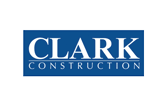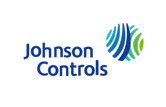4/7 Virtual Town Hall: Is Construction 'Essential' during a Pandemic? (Transcript)
Debate rages over how “essential” construction is during a health crisis, and whether continuing any project is worth the risk.
For our recent COVID-19 webinar, we debated the topic “Is Construction ‘Essential’ during a Pandemic?” We also talked about best practices for construction companies that are continuing to work safely and efficiently.
Speakers
- Tim Croke, VP, Tishman Construction (NYC)
- Nathan Howat, President of Blue Mountain Electric (WA)
- Tyler Bashlor, Owner of Strategic Building Services (CA)
Transcript
[Yves Frinault] Hey everyone. My name is Yves. I am the co-founder and CEO of Fieldwire. We are a construction startup based in San Francisco.
I want to welcome all of you that are attending this virtual town hall. Like many of our guests here today, I am quarantined in my home. As we are entering, I think, our third or fourth week of quarantine, or at the very least reduced economic activity, I think it's time to ask a few questions.
As we are seeing, essential activities are continuing in many sectors — construction being one of them. How essential, really, is it to keep construction running right now?
I think we are going to highlight various specific activities where construction contractors and construction-related entities are able to contribute directly to solving the crisis. Then we're going to talk about safety and the economics of keeping sites running and the situation. Finally, we are going to turn our attention to the recovery phase. I think that the current situation is expected to last for a while. Even if a strict "Shelter-in-place" ends, we're not going to be back at one-hundred percent immediately. We need to learn to operate durably in an environment that is not going to be safe for a long time.
We have gathered a group of panelists to represent different parts of the country as well as different types of organizations and construction markets. I am now going to introduce you to our panelists. Going east to west, we have Tim Croke who is a VP at Tishman in New York City. He has worked on projects such as the Cornell New York campus, NYU hospital, and recently the famous Waldorf Astoria rebuild. Welcome, Tim.
[Tim Croke] Thank you.
[YF] We have Tyler Bashlor who is the owner of SBS Strategic Building Services in California. They have the inspection record on many ongoing healthcare facilities such as the Loma Linda Hospital in SoCal. Welcome Tyler.
[Tyler Bashlor] Thank you. Glad to be here.
[YF] We have Nathan Howat, the President of Blue Mountain Electric. They are an electrical contractor in Washington State focusing primarily on federal projects such as Navy and Coast Guard projects. Nathan is bringing a point of view of a different type of essential work. Welcome, Nathan.
[Nathan Howat] Thank you.
[YF] Let's not waste time. We're going to dive right in. Once again, this discussion is going to be in two parts. In the first part I have questions that I have prepared for our guests and then in the second part we are going to answer audience questions. We have Justine in the background that is collecting questions on chat so she is going to compile them so that we can cover them in the second part. All right. Let's get in.
Construction, as we said, has been deemed essential, as an essential activity in many parts of the country. Therefore it is continuing to operate mostly, most of our guests are operating actively right now with their business. But how do you define "essential" at a time where we have the Navy moving hospital ships in largely populated areas and the Army building campaign hospitals? As we are going to see, many contractors are finding themselves on the front lines, as well.
Maybe we can start with you, Tim. You just rolled off the Waldorf Astoria and my understanding is that you are actually involved in very fast large-scale transformation projects right now in New York City.
[TC] Sure, those are probably the pretty straight-forward ones. The essential, or the hospitals, the lifecare centers, things like that. They have also got utilities and infrastructure still going. Even regular buildings that have life-safety issues, such as Local Law 111 which is facade repairs on buildings, things which might be a threat to the public or to the safety of the building structurally. Those are ongoing.
Also, more immediately, in the last month or so we have got the temporary hospitals. The Army Corps of Engineers is doing some of those, but there's also some private sector work that we're doing on different college campuses such as Westbury, building temporary facilities. Also fitting out existing spaces in existing hospitals for more intensive care, or turning them into an intensive care unit — adding medical gasses, more power to aid ventilators and oxygen and things like that.
[YF] Explain to us a little bit more what it means to upgrade medical healthcare facilities to be able to treat patients. You're saying it's mostly increasing the electrical output, but are there other factors?
[TC] There's a lot more equipment involved. There's a lot more supervision from the nursing and doctor staff. Where you may have a room with a coherent patient which is coming in, and they may be there overnight or a couple days, but they're coherent, they're speaking and they're being monitored with basic equipment. Somebody that may be not conscious or semiconscious has a lot more instrumentation, a lot more telemetry that is monitoring their functions, monitoring their status. There're more cameras, maybe watching the patient, maybe monitoring the equipment activity. There's gasses, if this person is on oxygen twenty-four hours per day. There's suction, different functions in a hospital. There's airflow, so those gasses have to come to the space and they're not in all spaces. Typically in the head-wall sometimes, we're fitting them without a real head-wall but they're in there for hooking up equipment such as ventilators which everybody is hearing about. It demands more power, there's more power requirements, it's all emergency power. If something happens to the hospital, that equipment stays on, so functioning life-safety equipment. There are power requirements, there are IT requirements, there are different sorts of plumbing so the gasses can be brought to that space.
[YF] Those are obviously accelerated timelines on those projects. How fast can we — if you grade a section of the hospital from the moment they decide to do it, to completing the design, completing the retrofit of a few rooms of the hospital and just delivering it back, what are you seeing out there?
[TC] We're seeing a couple weeks to a month depending on what has to be done, what walls. The less intrusive it is — if we don't have to tear down walls or rip up floors, things like that — it goes much quicker. It depends on the availability of the materials. Some of the time, the medical valves, medical boxes are immediately available off the shelf. Most of the distribution is. Wires, conduits — that you can get pretty quickly. Ceiling tiles, things like that, in the rooms they're built a little different from the hallways. So you try when you go in not to disrupt or tear up the ceilings and the walls as much. Just surface-mounted for immediate use. It's not pretty, but it's functional.
[YF] Tyler, we were talking briefly about this. I think they may be turning the Staples center into a temporary medical facility. You have been exposed a little bit to that project, can you tell us more about it?
[TB] Sure. We as an inspector of records aren't dealing with that. OSHPD, who is Office Statewide Health Planning and Development — that's the jurisdiction that we work under out here in California. They have been deployed to go and look at that. Really, that's a joint review between OSHPD and CDPH, that's licensing for the Department of Public Health.
Some of the items that they're looking for are really just, of course, life-safety aspects, ingress/egress, their communications, what type of water systems they have there. Of course, electrical, medical gas. A lot of times they're bringing in the E-cylinders or H-cylinders depending on the size and how they're feeding the potential patients. They have converted that. OSHPD has provided some guidelines, that's good for them. That would also work for licensing. A lot of that is spacing between patient beds, of course. And also of course your essential services which we deal with a lot.
[YF] You guys are very aware of the evolution of codes right now. Are you seeing codes being adjusted right now to deliver medical facilities faster or to actually cover that type of temporary medical facilities?
[TB] One good thing is OSHPD has policy intent notices. They also have what they call "PINs” [Policy Intent Notices] and they have code application notices as well. Those are “CANs”. We do have a PIN; it's called "PIN-4." PIN-4 is kind of integrated in with what I have received from different OSHPD officials they have sent out. That was for TB [tuberculosis] patients. But this is kind of in the same regard, based on now with the more ever-evolving information that we're getting from the CDC. We are seeing that it is more airborne, not just surface.
Pin-4 was really just to create negative isolation rooms so they have something in place for that. Really the best thing to do is to reach out to the jurisdiction and let them know that, "Hey, we're converting our spaces. We're taking our operating rooms which we have low census now because we're trying to keep only whatever is necessary to have operated and people operated on. No elective operations going on. They're converting and repurposing those spaces to make them into negative isolation rooms as a proactive approach of getting these patients in there and cared for.
[YF] Are you actually seeing an increased activity for your team right now with the amount of retrofitting that's going on in the healthcare industry?
[TB] Oh, absolutely. Just me, personally, and I have about thirty-five inspectors that work for me. We have about ten support staff that maintain all of our documentation from day-to-day. We are very busy with this. I have daily conference calls with different facilities. They're putting out a lot of great information, a lot of helpful information. They're giving us links to different websites.
We have our own protocols on what we're doing as a company, but it's definitely a lot of time and energy that we're spending on this. It's very much needed. It's kind of like Tim was mentioning, the temporary facilities. We have tents going on outside. We have prototypes being made and constructed off-site for approval from different facilities. There's a lot of collaboration with the facilities, designers, and contractors to create these additional spaces that we may not have for all these potential patients that we could have come in.
[YF] It's a very difficult balance of maintaining standards as we're trying to bring capacity online as fast as possible. That makes a ton of sense.
Talking about a different kind of essential facility — Nathan, working primarily with the Navy and the Coast Guard, you were saying that you got letters from the Navy offices to make sure that you guys would keep coming on site. What's the situation up in Washington State?
[NH] Here in the Pacific Northwest, Naval installations and Coast Guard, we're moving forward with almost all of our projects. Every single one of our projects so far is moving forward. We haven't stopped any of them; we're moving forward with critical infrastructure projects for base electrical distribution. I've got a generator getting loaded on a barge, going on a four-and-a-half hour boat ride on Monday to a remote island with an Aids-to-Navigation station for the Coast Guard. They are very adamant that we keep moving forward with that to keep their infrastructure up and running. Things like air traffic control, the nuclear submarine fleet, and pier work — things like that. We're full-tilt moving forward with all of that work.
[YF] That's actually a great segue to the next question, which is—
Let's talk safety for a second, right? Keeping essential sites going is important, but in a manner that's safe for the crew. I think we all saw in the news last week that the captain of a nuclear aircraft carrier was fired for arguing for the safety of his crew over immediate combat readiness. Obviously, there's a lot of hard choices to make.
Nathan, how are you approaching that? You have a lot of craftsmen working for you. How are you approaching safety, how are the craftsmen and women on your team feeling about the situation, do you know?
[NH] We have about 20 craft professionals, licensed electricians, journeymen and apprentices, all different ages and health conditions. Things like this, obviously, totally changes so many aspects of what we're doing. Our first and foremost care is for their health and safety and even though we have deadlines and things that need to get done, their health and safety is our number-one priority.
First of all we made sure that it was clear that if they felt like they needed to go home for their own safety, or for the safety of someone else at home that they could bring something back to, that they were given the opportunity to do that. We want to make sure that they don't feel like they're going to be punished for doing that, because that’s our number-one priority.
And then for everyone else, we just ask them to please come to work. And they’re doing it for the most part. Just about everyone is here. There’re a couple people that absolutely had to leave. We totally supported them doing that, and everyone else has stepped up to fill the gap and they’re working overtime, they’re working hard to fill the gap for them. We’re really proud of the work they’re doing.
As far as safety is concerned, we’re now — as of last night, on DOD property, we’re required to wear masks and cloth coverings. We're starting to implement that. It's challenging because they don't exist. My wife is home making some right now, and so we will see how that goes. I'm sure they'll be great.
We're putting in policies like, no more than one employee driving a company vehicle at a time. Job trailers and lay-down areas are definitely areas of concern with people gathering together, being on the job, being six feet apart. We've restricted access to our office and other areas or warehouse areas where we have to be. We're just trying to do the best we can to keep working and supporting the mission. Stay safe and let someone— we would not want anyone to get sick at work and go home and have a problem. That would be devastating.
[YF] That makes sense. I think we want to keep the crews safe as much as possible.
Tyler, you're involved on some really large head-count projects typical of healthcare facilities. What are some of the steps you have seen that are being taken in Southern California to make sure that the sites are operating at reduced crew sites, or are they temperature-metering on the entrance of the site? What are you seeing?
[TB] We're working on the Loma Linda Medical Center, that's a million-square-foot hospital. New construction. We did have a little over eight-hundred workers on site every day. We kept that mancount around seven-hundred. It's a big task. McCarthy construction is the builder that's on the job. We really have got a lot of skeleton crew in our office area. BBJ is our architect. They are one or two people. We're scaling that down, we're taking every precaution that we can.
When I talked earlier about a daily meeting, that's what we're doing with that job specifically. So they're taking a lot of precautionary actions to try to, for one, try to have everybody feel safe, that they have a good working environment, but also, two, to keep the project going.
We're looking to get occupancy of the building at the end of this year. We're considering this something very critical for the community and to get this space open will be very important for them. They have since implemented cleaning for our areas, making sure our surfaces are very clean. They have hired that cleaning service to go from one side of a trailer to the other. They're doing it in the field as well. They're providing masks. The general contractor is not only providing masks for the facility let alone the Loma Linda's existing hospital, but also for our construction site. That has been very helpful.
We're keeping that six-foot distance. It's very hard to do, but it's very important to do. Then it's just, "What if somebody tests positive?" If we have people that are testing positive, then we have a protocol for that. We're making sure that they get their treatment, we're identifying where they've been working, they're cleaning those areas as necessary, and they're also identifying who they've been around. Keeping track of who they've been working with. The CDC has laid out some specific requirements for that. If you come within six feet and you're with that person for more than five minutes within that range, then they're considering forcing that person to self-quarantine for fourteen days and that's what they're doing. Luckily, we're just maintaining that, keeping that clear distance and trying to move the project forward for the community.
[YF] I'm not an expert, but this seems to be a game of statistics, and every little thing that you can do counts in terms of reducing the chance of exposure of your crews.
Tim, in New York City, correct me if I'm wrong, but I think you're operating on active facilities when you're doing those retrofits. Are there any specifics to that? What have you seen as far as measures taken?
[TC] What we have done, first of all, is just to educate the workers and everybody on the staff as to what the threat is so they understand how they can keep themselves safe. We've taken New York City DOB standards, there's OSHA standards, and we have formalized a protocol of how everybody should be working on the site with each other, whether they're within six feet, how long they're working, what activities they're doing so that they feel like it's being addressed. It's not just, "OK, just do this," it's a formal protocol so they understand that it's been looked at, that it's a way to keep them safe, and they feel a little bit better about working.
It's tough right now getting workers. A lot of them don't want to come to the jobsites. When we go to the hospitals, which are active hospitals, the first question in some of these hospitals — some of them are pretty active with the coronavirus, more so than others. The first question they say is, "How do we go there with all of that going on?"
Typically, the hospitals themselves — this is what they do, this is how they handle it, and they're in conjunction with some of the other city agencies like the FDNY and the police. They set up screening areas at the emergency rooms where people come in, they get pre-screened to see if they really have the coronavirus or if it's something else, what they need to do. They isolate people that probably have corona in a side area so it's not just one big gathering at the main entrance. Typically, we go in either a main entrance or through the loading dock. From the loading dock, it's typically isolated to where we're going. The hospitals themselves — or we will clean down and disinfect the areas that people are occupying on a constant basis — the hospital disinfects their areas, obviously. There's signage to direct so nobody wanders off into an occupied area. Typically, in hospitals you can't really wander off into an occupied area without somebody noticing you. Where we're retrofitting is usually in an isolated wing, so it's emptied out. We go through — usually it's a set of two doors, followed by two doors, an isolation area, and we're into the area. Then we isolate it like a typical construction site, probably a little bit more so. We carry on from there.
The construction group is isolated. Coming from their cars into the actual site, the work area, it's usually not as big of a threat as they would think. The hospital takes care of it. We make sure of the pathways that they are supposed to take. Again, we mitigate the dangers involved with it.
[YF] Those are excellent steps. I want to react to something you said, which is that it may be hard to convince workers to come and work on some of those essential facilities as you said. They may seem like they're closer to an epicenter of COVID-19. The biggest argument, I think, for keeping sites running is that it also makes sure that the workers and the craftsmen are getting their paychecks. This situation sometimes makes it feel like that might not necessarily be the case if there is a fear that the site is being exposed to coronavirus. We can expect this situation to last for a while.
I want to talk more about the long-term and the recovery. I was reading an article today that was saying that this isn't really going to be over until we have a vaccine or a successful treatment and that's not going to happen for the next twelve-to-eighteen months. That seems like an extremely long period of time. How are you guys planning for the long term?
Nathan, maybe we can start with you. As a specialty contractor you're probably the most exposed to variations in activity, so how are you thinking about this?
[NH] Honestly not much has changed for us. We're still bidding work, and designing work, and doing work. As long as the Navy is open for business and letting us do the work, we're going to keep doing it. Obviously if there's a major infection that goes through and people have to quarantine and if we can't supply guys with manpower, things like that— If that happens with our crew, I fully anticipate that's going to happen with all the other trades and the general contractor and everyone else. That project might be shut down when that happens, if it happens. I hope it doesn't, but I don't see how it couldn't in some regard just because of so much of it going around.
We're just going to keep doing what we're doing and taking it day-by-day. We will make the best decisions that we can as we need to make them.
[YF] So what you're saying is, you've seen no changes to the procurement process of government jobs, that they're essentially open for business and just continuing the process, right?
[NH] I think it's a little slower because people are working from home. They're not collaborating as much to get project managers to talk with contracting officers and things like that. As of right now there hasn't been— We're still seeing some jobs coming out to bid and the pipeline still getting loaded. We're just hoping that that continues, until it doesn't. Then we'll tackle that when it comes.
[YF] Usually, the stimulus package comes from the government on government infrastructure so I think that there is hope on that front.
Tim, Tishman is obviously involved in many types of projects. Are you seeing the activity scaled back on some of them to favor others? How are you adapting for the long term?
[TC] Corporately, it's scaled back quite a bit. They've scaled back at the main offices, they've scaled back at a lot of the jobsites. They had to. Some closed down completely, some, only certain operations are allowed to continue. So it's quite a bit of a scale-back.
I am more of an optimist. I don't think it's going to go on forever like some people do. I am hoping that by the end of this month that if everybody went and did the right things, hopefully by the end of this month, we'll see all the curves level off or start to decrease. Certain other types of projects that are non-essential now might open up to activity, as well as a lot of other businesses along with the actual construction sites. You've got suppliers and vendors and factories that are shut down, so we're seeing the supply chain affected as well when trying to get those items. I think that might affect construction down the road a bit, but hopefully in some of the projects that we do, say two- or three-year projects, sometimes more, a two- or three-week blip can be made up, it can be absorbed. A two- or three-month hit can't necessarily be absorbed. I am hoping that this is sooner rather than later and we can all make up for that lost time and the people that are out of work will be able to get back to work and make up their losses.
[YF] Yes, I would agree on your timeline of two-to-four weeks. We're seeing Europe start to bend the curve already. I think we're going to be there in the US in a matter of weeks. The hope is that if people can prove that their safety is taken very seriously, as you're saying, less essential projects will be able to reopen progressively and go like that.
Tyler, a similar question for you. Once again you were saying that the activity was extremely intense right now on healthcare facilities, but how are you seeing the market evolve long-term and how is your team adjusting to the situation?
[TB] We do have some facilities who are really looking at what they consider a non-essential construction project, and what is essential for them to get certain spaces open or if we have ongoing construction work, or if they want to take some of their projects and cancel. We have seen some projects that we had coming up that were postponed. We have seen some of our facilities look to stop some of their projects that they've got. It's a big concern for a lot of our people working and continuing to work. We have seen some facilities in LA that aren't ours, but we have had a new construction project just shut down their whole project which was a new tower and addition to their existing campus.
We are seeing fluctuations in this. I think we do see a lot of people or facilities worried about their cash flow and their census is down right now and they worry if they're going to be able to fund some of these jobs. We've seen that and so what we have looked at a deferred payment program for us, whether that's continuing to work with a percentage that would be paid to you over the timeframe of months. We've looked at that.
Of course we're here to help the facilities and do what we can so we're continuing to work, continuing to provide the services. We don't want to stop that and of course we want to stay safe as well. You will see some fluctuations in the healthcare construction industry. I’m just a little concerned about what the future holds.
[YF] We are actually at the halfway point of these discussions, so I want to remind the audience to submit their questions. I see that we already have a lot of questions that have been submitted, which we're going to move to.
Tyler, you bring up a very good point which is the question of payments, deferred payments, adjusting how we're either invoicing services or collecting money. I want to hear from Tim and Nathan what they're doing on that front or maybe what they're doing differently on that front.
Tim, you have some thoughts on that front?
[TC] Right now we're continuing where we can. If the job is operational, the office staff would be working out of remote locations or home offices. The supers are either on the site or rotating in and out, handling what they need to handle. There are bids going on. There are bulletins out that are being priced. There's plenty of work to do in the near-term.
As far as jobs that are shut down completely, I am not involved with anything that is completely shut down, but for a week or two. I wouldn't recommend and I haven't seen any jobs that are completely demobilized. That costs money. Mobilizing again costs money, so unless it's going to be long-term you don't want to completely demobilize.
What we have done is moved rental equipment off the sites so we're not paying rental fees, things like that. There are electrical shutdowns, mechanical shutdowns, or standby that's required, so we're covering those costs or the owner is covering those costs for what's required to do partial shutdowns just for safety reasons that may be mandated or just practical standards to shut things down so there's not a flood or leak or a fire or something like that.
We have tried to cover the practical aspects of costs on the job, but certainly keeping the job going through remote locations and everything like that. It's still functioning. Maybe in a less efficient manner for a while. There's a lot of new technologies that people are getting used to. People have gotten pretty used to them pretty quickly over the last couple weeks and that has ramped-up efficiency, too. I don't know if it's one-hundred percent, but certainly people are functioning, and they know the importance — at least we have talked to our staff as I am sure most people have — of the importance of keeping things going. People are learning the technology and using it pretty quickly and making it more efficient so they can do what they need to do.
[YF] I want to drill a little bit further with you on that before we go to Nathan. As you said, there is a minimum overhead to keeping a site open, safe, and running. What is the threshold of disruption in either productivity or supply chain that makes it so that it doesn't make sense to keep the site running? Where you would rather shut down the site than just keep it running at a very low productivity? Or basic nature supply issues?
[TC] First of all, it's time you're going to shut down, what's practical to shut down? If you have a job that's going on for two-, three-plus years, you shut down for a couple weeks, you can make up that time working additional hours, additional people, accelerating materials, things like that.
If you've got a job that's shutting down for a month and all of a sudden you're not getting mechanical equipment, you're at a stage where you're installing, say, mechanical equipment or something like that and you can't get that for another month, it's different.
The thing about construction is every job is different. The demand or requirements through the course of the schedule are very different. It has got to be a really close look at where you're at on your individual project to determine what you do, whether you shut it down, whether you furlough people, whether you move people to other jobsites that will be continuing or starting up, things like that. Those are all things that have been and are being talked about on most jobs right now.
[YF] Nathan, once again, like we were talking about invoicing and payments— I think the government can sometimes be the best or the worst customer depending on how you look at it. Have you seen any changes there?
[NH] We're still getting paid. We are a subcontractor to private contractors, so I don't deal directly with the government from a contractual perspective. We have been receiving payments from accounts receivable and still paying our bills. And we have worked with our vendors to extend our terms if possible, just to make sure if there is a gap or a delay.
One of the things that concerns me a little bit is all of the people working from home for the Navy, whether they have access to their systems for approval or processing of invoices and things like that. Whether they are still going to be able to do that. I expect them to since they expect us to keep working. I expect them to keep paying. We hope that relationship continues and we can keep working. It hasn't been long enough to really know whether there's an impact on that yet as far as the government processing payments for construction but we don't have any reason to believe they won't.
[YF] I think it's good for the business. One audience question was really on the word "essential" and how did you initially feel about the use of the term "essential" when it was applied to the construction business? How do you feel about it now? Anybody want to take that one first?
[NH] I could start, if you want. We're on the internet, you're in a house that has power, so from an electrician's standpoint, we're vitally essential right now, especially to make sure that the power grid remains operational. Not just the power grid but the whole system, all of it until the last mile to your house. Internet and connectivity and things like that are the things that are keeping us all sane right now. I think that it's really important that we maintain those systems, for sure. In that regard I think it's really essential.
[YF] Tim, you're working directly on some critical infrastructure facilities. Are there any thoughts, any perceptions from people that are around you or around the team that are just looking at construction differently because of that?
[TC] Well, yeah. Initially when New York State shut down most businesses or what's going on out there, they left the entire industry of construction as essential. Later, people started to complain, saying a new high-rise condo isn't so essential. They looked at it closer and they came out with guidelines a week or two ago that describe what "essential" was. Basically, if it's infrastructure, anything that is going to keep life going — and I mean just life in general, not saving a life — keep things going, like the power grid, like electricity, like shipping materials, trucking, obviously hospitals, fire, police, transportation, things like that, we have got to keep going.
Anything on the building side of construction, if it's a threat to the public or if it's a danger to the building, that's something. You can't leave a piece of steel half up and then walk away while it's shored up. Certain things have to be finished to make it safe if it's to be left there for a period of time. People are in their houses, in their apartments, they have to be able to survive. That involves, again, certain utilities and certain functions — food, deliveries, things like that. Again, it's just being able to go outside of your house. You have to be safe if you do go down the street and in a car.
[YF] That's a good segue to Tyler. Once again, inspection services right now are really about making sure that even as we're rushing facilities forward, that we're still meeting a certain standard. What's your point of view on that "essential" aspect?
[TB] I think Nathan and Tim really hit it on the head. Plus, the Department of Homeland Security also came out with a memo on March 19th. It just described what was "critical,” what was "essential.” Of course, as I mentioned earlier, the facilities are also considering what they feel is "essential.” You look outside of healthcare and you look at your homes. You need power there. You need plumbing there. You have an issue where your plumbing is backed up, you need to have somebody come up there and help you fix it. Of course keeping that sanitary, those sanitary methods and processes in place, and having somebody come out there and help you with that is definitely essential. It's essential for the healthcare and wellbeing of people.
As far as our inspection standpoint, and maintaining that oversight and review as we do continuously every day, that is definitely needed to keep a project moving forward. Tim mentioned a lot about working in operating facilities. We are really trying to stay out of the operating facilities as much as possible, but we have a lot of facilities that are continuing with the work, so we're in there doing the work. We're ongoing. We have some projects that are at ten percent, we have some projects that are eighty percent, and we're continuing with the services to keep the jobs going.
These spaces are needed. While they're looking for spaces that they can utilize in their operating facilities, they're also looking to get occupancy from the jurisdiction down just to get that extra space completed and move the new patients in. It's very important.
[YF] I actually have a couple of questions for you, Tyler. How much of your work are you able to do remotely versus on site? Because Tim was mentioning that they were running skeleton crews in the trailers and Nathan is mostly still running on-site in terms of the technicians and the craftsmen themselves. What about inspectors?
[TB] Inspectors, really, they have got to be out there. They have got to be in the field, they have got to be in the hospitals. They have got to be looking at the work, looking at the materials being delivered. Tim mentioned the driving and the trucking industry and also the manufacturers. Some of our manufacturers for drywall shut down for a period of time and then reopened. You do have that concern with workers and whether it's safe and whatnot. We have seen a downtick from that, too.
Inspection definitely needs to be there. We have a lot of support staff, too, so luckily they can be remote and not necessarily have to be in the environment and can work from home. We're fortunate for that. I feel like we're fortunate just to maintain working. A lot of people are at home and quarantined and stuck in their house. I feel that we're fortunate that we can provide service for people and continue to work. And that means we are getting out of the house and going to the jobsite.
[YF] Question for Tim. We're seeing that we're starting to get used to the situation a bit more. I think that the guidelines in terms of what's essential are being clarified. I think the liability side is probably being clarified a little bit as well. So who has the burden-slash-liability of letting a worker enter a site that may be sick and may contaminate others. Where does that burden fall? Is it on the owner? Is it on the foreman of the specialty contractors? Is it on the GC? How are you thinking about liability right now?
[TC] That's going to be a good question for years to come. Excuse me, but I'm not a lawyer. We try to cover our bases. We do have thermal scanning at many sites. The hospitals themselves— if you're going into a hospital, most of them will do some sort of screening or thermal scanning. At least they’ll take your temperature going in to see if you have a fever. We have tried to initiate that at all of our jobsites. At the very least, just to take peoples’ temperatures.
Say you have a fever. It could be anything, but go home. When somebody doesn't feel well, we certainly send them home, or a spouse or somebody in the house is sick, we make them stay home and quarantine for a minimum of seven days if it's something other than coronavirus. If it is that, obviously it goes into a minimum of fourteen days. Anybody that comes back that was sick to any degree gets a doctor's note before they return. It's something we've told people every year, every winter when it's flu season in New York and in the Northeast where people get sick. You say, "If you're sick, stay home," but people don't do it. Now it's a much more conscious thing. It's much more acceptable to just say, "I'm staying home,” or, "You're going home." Now with the virus thing, there is a requirement to get a doctor's note to come back.
[YF] When you were talking about "thermoscanning,” if you have a worker that has a slight fever when they show up on site, it's a strict policy where they cannot enter the site and they then have to go home?
[TC] Yes.
[YF] I think that's a good implementation, then.
Tyler, quick question for you. What does a small contractor do when— A lot of contractors have actually, as Nathan was talking about, given their stocks of N95s to healthcare workers, and many of them are running low on supplies. What if code says you have to have a mask, and they don't have one? What should they do?
[TB] If they're working in a healthcare facility, a lot of the facilities are actually providing the masks. So they'll have masks. I actually went into a facility yesterday, and I had my own mask. They said, "No, we would rather you use our mask because that way we don't have any contaminants from outside. Here's a mask. We have gloves for you, as well."
They gave us gloves, a mask, they did the screening, you fill out a questionnaire while you take your temperature and they give you a sticker that says that you have been screened and safe to enter the facility. We actually work on not only what they call OSHPD1 and general acute care, we work in a lot of skilled nursing facilities that are OSHPD2. In skilled nursing facilities, you have a lot of patients there that are elderly, sick, they can't move by themselves. So they need that extra protection. Going into those facilities, you definitely want to be safe, you want to follow their guidelines.
In some regards, too, we're getting whatever we can due to just the limited amount of safety PPE materials that we have. Some people are using bandannas, some people are making their own stuff. We're using whatever we can. Especially when we go into operating hospitals, luckily with all the donations and everything else, they're able to supply that. You use the least amount as possible, but we definitely want to abide by their rules and what they have to provide for you. I think that's the best way to achieve some kind of compliance to get in there and be around these people because you're not just protecting yourself, you're protecting the other people around you.
[YF] Yes. I think that's the most important thing. The mask protects others more than it does actually protect you.
Nathan, you were saying that the Navy has adjusted its language to allow for makeshift masks or something like that? Is that what you were talking about?
[NH] Yes. We got a letter from the Department of Defense, Department of the Navy today with guidance for cloth face coverings with some specific direction about how much of the face needs to be covered. Basically, on all DOD facilities, all personnel are required to have a cloth face covering now.
[YF] Which I think is intelligent, because people need to protect themselves whether or not they have access to N95s or similar types of materials.
Tim, I know you're optimistic on medium-term, short-term reopening on many sites. Is a company like Tishman investing in home setups to help its engineers and project managers that are working from home just to be more efficient, or were there any technology investments that were done to guarantee that even if part of the management is working remotely, they're able to produce as well?
[TC] I think being in a construction company, we’re probably a step ahead in that. With us, we have a main office that's— There are a hundred-thousand people at AECOM and Tishman is a part of it. We're not at a main office, we're always in remote offices and field offices. Field offices have anywhere from two or three guys to fifty-plus at the Waldorf. Almost always you're working to some extent remotely, even though some of the remote offices are a pretty big office. You're used to having a laptop and taking a laptop with you and our guys have tablets that they walk around with now on the jobsite, off the jobsite. We had that initial setup.
We have the different software we use, Microsoft Teams, Zoom, and things like that to connect with each other. The different software, like Fieldwire, where drawings are downloaded and shared, and photographs. We do that a lot now/ A lot of the architects we deal with are out of town. We did a NYU job where the architect is in Philadelphia, so we're doing punch lists on Fieldwire with photographs. Then they didn't have to come from Philadelphia to New York twice a week to do the simple punch list stuff. They came for the more complicated things, but it saved a lot of time.
Right off the bat, we were kind of a step ahead that way. But, as I said earlier, some of the technology for a guy like me — that took some catching up, to be able to use this kind of stuff and be remote constantly. We're used to standing around a table with a set of drawings and pointing at this and redlining that and doing things like that. That's taken a little bit of getting used to. But everybody is increasing their game to take advantage of the technology.
[YF] That's one of the silver linings right now. A lot of companies are stepping up on the technology front to be able to do more remote or with reduced crews on site.
One little economic question. Many of you have heard about the PPP loans that the government is preparing that are basically small business loans to try to bridge the economy until the recovery starts. Are any of you taking advantage of this? I think that might be a question that's more relevant for Nathan or Tyler. Have you looked at it? Any thoughts?
[TB] Yes. We’ve taken a look at it. I've had some of my staff check it out and start to fill out the information. Really, just in preparation of if we do have some slowdown. Currently, right now everyone is fully staffed. I don't have an issue with that. You definitely want to plan for the future because we don't know how long this is going to go on. We have taken a look at it. It's a lot of documentation to fill out. It's definitely on our back-burner.
[NH] We're working on it, as well. Same position here. We're filling out the paperwork and trying to get it in. We have got some questions. The banks are definitely overloaded trying to answer questions and process the paperwork. The SBA is going to be severely overloaded if they're not already processing it. We're looking into it. Since we're still working, we're not too anxious to get it in because we know a lot of people need it other than us who aren't working. We have got some people at home that we would like to get compensated for if we can. We're just trying to feel our way through the process as smartly as possible.
[YF] We’re having the same approach at Fieldwire. I think we're filling out the paperwork, getting ready to trigger it if we want to. I am not sure that we have, yet. We are trying to figure out what we have to disclose and the details of it.
One last question that actually is a bit more long-term. We have a student from a construction management program— Many students whose graduation ceremonies are probably cancelled at this point. The question is, are their internships going to be cancelled as well? What are you guys thinking about or doing to make sure that the next generation that's coming online is able to actually start work somewhere for an internship when June or July come?
[TB] For us, we're going to continue on and keep them aboard. It's definitely a pandemic that we have out there but we keep everybody's morale up — and it really is psychological for some people to keep them working — by keeping them moving forward. We're going to continue with our education side, we're going to continue trying to hire people, and continue to work. I think our industry, and every industry, will need that once we get past this whole virus that's going around. I implore all my people to keep looking for people that are interested and that want to work. If we need to do some remote training, we're definitely set up for that. And that's how we're going to move forward with it.
[NH] Yes. Same for us. I am a training instructor myself. Our craft training program is still operating. We're doing some things a lot differently than we did before right now. Doing some correspondence and some online learning, distance learning, things like that. Apprentices are still learning and still working and so we're going to keep teaching them and move them forward as best we can until we can't.
[YF] Tim, what about the internship program at Tishman?
[TC] As far as I know, we're still going ahead with it. I have not heard any limits on it or anything that's going to change. We usually do have quite a number of interns over the summers. I expect that will happen the same way this summer.
[YF] That's probably the best question to end this thing on. I do agree, we're adjusting our interview process, we have hired our first employees without doing on-site interviews which is extremely weird to us. We have a very in-person culture but I guess we're all adjusting.
I think that's the best way to wrap it up. I want to thank the panelists for their time and the great content they've brought to us today. I think this turned out really good, again.

 Yves Frinault •
Yves Frinault • 














